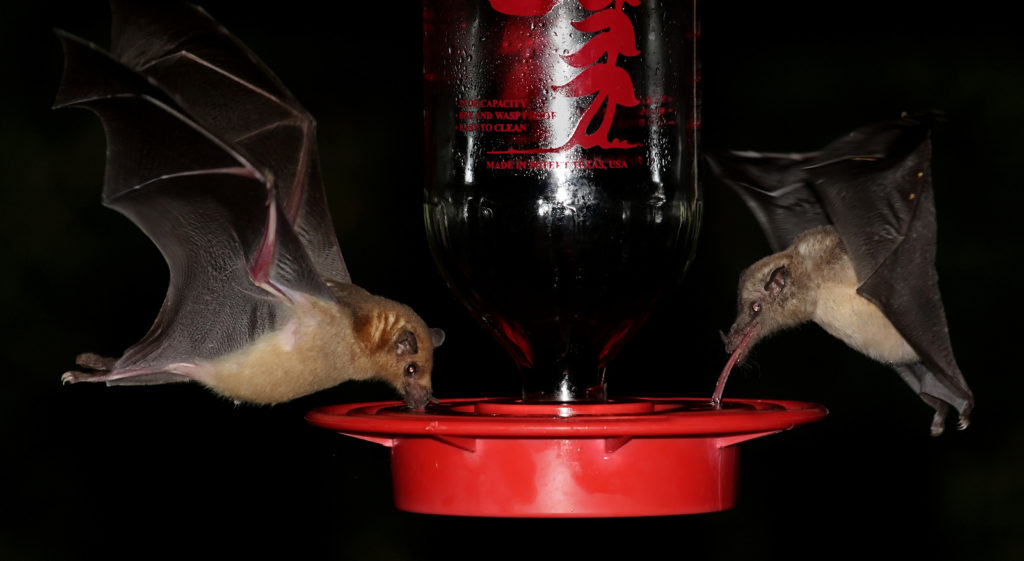According to the International Union for the Conservation of Nature (IUCN), there are currently 24 species of bat that listed as “Critically Endangered”, which means they are facing an exponential and impending risk of extinction. One interesting species that was once on this list is the Lesser Long-Nosed bat. Although previously listed as endangered, the Lesser Long-Nosed bat now faces more promising and brighter times.
Continue reading to learn more about the Lesser Long-Nosed bat, including its journey on the road to extinction and back.

The Lesser Long-Nosed Bat
(Leptonycteris yerbabuenae)
Also known as the Sanborn’s long-nosed bat or the Mexican long-nosed bat, the Lesser Long-Nosed bat is a species that is most interesting to learn about. They are native to Central and North America, as they typically prefer warmer, tropical and sub-tropical climates being that they are fruit bats, or megabats. See our blog, “The Differences Between Megabats and Microbats” to understand megabats more.
Their diet mostly consists of fruit nectar and pollen, hence the moniker, “fruit” bats. In terms of their scientific name, they perfectly fit the description having long, narrow snouts and a small triangular nose-leaf. More on their appearance, they are small in size, reaching an average size of 3 inches and 25 grams. Also, they have short, grey-like fur, and long wings.
Federal Endangerment and Conservation
At the start of 2017, the U.S. Fish and Wildlife Service suggested to remove the lesser long-nosed bat from the federal endangered species list. Back in 1988, the species was added to the list of federally-endangered species after noticeable declines in roosts became apparent in Arizona and Sonora. During the same time, it was guesstimated that there were only about 1,000 Lesser Long-Nosed bats alive, and fewer than 14 known roost sites.
The Great News
Today, there are more than 200,000 Lesser Long-Nosed bats living among 75 roost sites! How did this become possible? In addition to the fervent and rigorous monitoring, studying, researching, and intervention endeavors, the successful recovery of the Lesser Long-Nosed bat species has been largely due to the efforts made by several important interest groups and organizations, including scientists, biologists, non-governmental organizations, federal and state agencies, and believe it or not, even tequila producers in Mexico!
Their Importance and Their Decline
The top causes for the decline in Lesser Long-Nosed bat populations are largely due to over-developing land around their natural habitats, invasive grass species obstructing their source of food, and early harvesting of wild agave before it bloomed. Now you can see how all of the above-mentioned sources of conservation efforts contributed to their successful recovery.
Bats have a vital ecological importance, and subsequently, and economical importance, to our local communities. For this reason, it is strongly encouraged to be kind to bats, and appreciate all that they do for us. See our blog, “How to Safely Support Local Bat Colonies” to learn how to do your part. Although sometimes bats can become a nuisance to property owners, it is important to remember that it is not their fault. Instead, contact a local and trusted bat removal company for safe and humane assistance.
If Bats Become a Problem For Your Property
Sometimes bats can be a nuisance, even though they don’t mean to be. When this happens, trust a licensed and insured Virginia bat removal company for safe and humane bat abatement service at an affordable price. Contact Virginia Bat Pros today at 804-729-9097 to request a free estimate or information about our services, prices, and more. We look forward to delivering affordable and long-lasting solutions for your bat problems!

